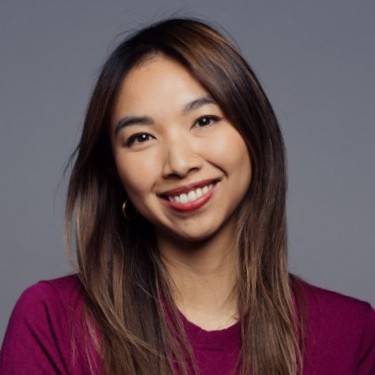Back to blog
6 MIN READ
Ecommerce Product Management Guide for Mobile Product Teams
PUBLISHED
14 January, 2024

Product Analytics Expert
E-commerce apps have the potential to be goldmines for e-commerce businesses.
Mobile commerce accounted for 60% of all e-commerce sales in 2023, with mobile e-commerce revenue topping $2.2 trillion worldwide. Not all of this is mobile apps, but many studies have shown that apps outperform mobile web in conversions, purchase frequency, and revenue.
Point is—effective e-commerce product management for mobile apps is key to maximizing user engagement, sales, and customer satisfaction. But how exactly do you achieve this? In this guide, we give you a step-by-step walkthrough of how to optimize your e-commerce app for success.
Why listen to us?
At UXCam, we have helped hundreds of businesses from different industries optimize their mobile apps for maximum user satisfaction and conversions. Our solution is an all-in-one analytics designed for mobile apps. We're passionate about helping e-commerce businesses succeed in the rapidly growing mobile market.
So, if you want to stay ahead of the competition and drive more sales through your e-commerce app, keep reading!
Let’s dive in.
Helpful Summary
Overview: This guide equips you with all the knowledge and advice you need to effectively manage mobile e-commerce products.
Why you can trust us: We're a leading mobile-first analytics platform with a Google-approved SDK and have helped 61,000+ product managers achieve their goals.
Why this is important: E-commerce product management for mobile apps maximizes user engagement, sales, and customer satisfaction.
Action points: Take a data-driven approach by implementing comprehensive analytics tools.
Further research: For more information about e-commerce analytics, check out our guide to the top 5 e-commerce analytics tools.
What is e-commerce product management?
E-commerce product management is the process of guiding e-commerce app development in a way that aligns with goals and business objectives (think: revenue targets, user satisfaction, and brand identity).
It’s usually the job of an e-commerce product manager (PM).
This person is responsible for defining the product vision, researching and analyzing market trends, creating a roadmap for development, and working with designers and developers to bring the app to life.
E-commerce product management example: PlaceMakers
PlaceMakers, a leading construction materials supplier in New Zealand, uses UXCam to inform their product management decisions for their ecommerce mobile app through user behavior analysis.
During the pandemic, PlaceMakers faced challenges with rapidly changing stock levels due to disrupted supply chains and increased construction demand. Materials were selling out faster than their app could update the stock levels, leading to customer frustration when items appeared available but were out of stock at checkout.
To address this, they introduced a "Constrained Product" feature, indicating items with low stock or delayed availability. However, this feature initially backfired, causing an 80% drop in sales, as the messaging was too strong and misled users about product availability.
When we added [Constrained Products] we didn’t pay much attention to the UX side of the message and what we saw is that orders from April [compared to March] were down 80%. - Blake Johnson, Product Owner, Placemakers
Leveraging UXCam’s event analytics and mobile app session replays, the team discovered that users were scrolling past materials with the constrained products tag, even though it perfectly matched their search intent and would be back in stock shortly.
With this fresh insights, they redesigned the feature with clearer, more positive messaging, emphasizing availability despite potential delays.
This change, based on direct user feedback and behavior, improved customer experience and successfully doubled sales of the constrained products.

Why is e-commerce product management important?
E-commerce product management is important because:
It improves UX.
It keeps products competitive and relevant.
It uses data to improve decisions.
It creates a cohesive experience for customers across all touchpoints.
It ensures that the product is aligned with the company's goals and brand identity.
What are the key responsibilities of e-commerce product managers?
Here are a few of the most important e-commerce PM responsibilities:
Market research: Understanding the demand and competition in the market, identifying customer needs and pain points, and gathering insights to inform product decisions.
Product vision: Creating a clear and compelling vision for the product that aligns with the company's goals and values.
Roadmap planning: Using data and research to develop a strategic plan for product development, prioritizing features based on impact and resources.
Collaboration: Working closely with designers, developers, marketers, and other stakeholders to bring the product to life efficiently and effectively.
Testing and iteration: Conducting user testing and incorporating feedback into the product's design and functionality.
Launch management: Coordinating all aspects of a successful product launch, including marketing strategies, beta testing, and optimizing user experience.
Monitoring and analytics: Continuously monitoring product performance and gathering data to inform future iterations and updates.
How to implement e-commerce product management
Here’s your guide to implementing effective product management with best practices.
Step 1 - Define your business objectives
Product management is cross-functional—it’s the intersection between technical capabilities and high-level business objectives. Before you dive into product management, clearly define your business objectives and what you want to achieve with your e-commerce platform.
That means:
Setting revenue, acquisition, and retention targets.
Identifying key metrics to track and measure success.
Throughout this process, engage with stakeholders in different departments like sales, marketing, and operations to ensure alignment and buy-in.
Step 2 - Conduct market research
Next, you need to contextualize your goals with market research. This involves understanding your target audience, their pain points, how your product(s) can solve them, and how competing product(s) solve them.
If you don’t have an existing product, start by researching your potential customers’ needs and preferences. If you have an existing product, gather feedback from your current customers to identify areas for improvement.
Here are a few useful techniques:
Customer surveys and feedback: Ask questions about their preferences, pain points, and improvement suggestions.
Industry trends: Consider subscribing to industry-specific newsletters, publications, and blogs for regular insights into emerging trends.
Competitor analysis: Study the mobile apps of key competitors in your e-commerce industry. Identify gaps or areas where your app can offer a more or unique value.
Step 3 - Develop a product roadmap
Based on your business objectives and market research, you’ll then need to develop a product roadmap for your mobile app.
This should include:
A timeline
A budget
A list of key features and functionalities
A list of potential roadblocks or challenges
To prioritize features and fixes for your roadmap, you’ll need a prioritization framework—luckily, we have an in-depth guide to feature prioritization frameworks that you can check out. Once you have a clear roadmap in place, you can start implementing and testing your app’s features.
Step 4 - Incorporate data-driven decision-making
Use data and mobile app analytic tools like UXCam to monitor product performance and make informed decisions for optimization.
Here are some examples of how you can use us to for invaluable data:
User behavior analysis: Analyze user interaction within the mobile app to pinpoint popular features. For example, use our heatmaps to track which products are viewed the most and least often. Use our journey analysis to see how users navigate through the app and see bottlenecks and unusual in-app events like where they abandon their shopping carts. The data will help you optimize the user experience and improve conversion rates.

And by adding one snippet of code, you can add more context to UX analysis by viewing first-hand experiences via session replays.

Conversion funnel optimization: UXCam uses AI to help you track your whole conversion funnel. Use it to find new conversion paths, discover low-converting segments, and reduce the time to convert.

Customer segmentation: Segment your user based on criteria like location, purchase history, and behavior. Use our pre-built segments to get to know your users on a deeper level. See patterns quicker, like how returning or loyal shoppers behave.

Retention analysis: UXCam uses AI to help you track your entire conversion funnel. Use it to optimize the shopping cart and checkout process, find new conversion paths, discover low-converting segments, and reduce the time to convert.

Performance metrics: Learn the financial health of your e-commerce app by tracking key performance metrics like:
Average order value (AOV)
Customer lifetime value (CLV)
Customer acquisition cost (CAC)
These insights will help with decisions regarding pricing strategies, customer acquisition efforts, and marketing investments.
Benchmark your findings to compare your app’s performance metric results with competitors based on industry benchmarks. Identify where your app could be lagging and use your data for data-driven decisions to enhance your position.
Step 5 - Continuously iterate
Make continuous iteration, your friend. In addition to using UXCam to continuously monitor user behavior and KPIs, set up a robust customer support system and encourage customer feedback to drive product improvements.
Also:
Work closely with marketing teams to create strategies for product promotion, user acquisition, and retention
Leverage digital marketing channels like SEO, social media, and email marketing
Be ready to adapt and innovate products to remain competitive by keeping updated on emerging e-commerce technologies and trends.
Use UXCam to achieve your e-commerce product management goals
The success of e-commerce business relies heavily on its ability to adapt, innovate, and excel in mobile app product management.
Creating a seamless and compelling mobile app experience is no longer a nice to have—it’s a necessity. From understanding your target audience and their preferences to leveraging data-driven insight, each step plays a strong role in achieving your e-commerce goals.
UXCam is a powerful tool to deliver all the insights you need for e-commerce product management. See us in action by signing up for a free trial or by scheduling a demo.
You might also be interested in these;
7 Astonishing mobile e-commerce UX statistics (Infographic)
The only 10 slides you need to present session replay findings
8 Best UX analytics tools and software
AUTHOR

Tope Longe
Product Analytics Expert
Ardent technophile exploring the world of mobile app product management at UXCam.
What’s UXCam?
Related articles
Session Replay
Mobile Session Recording - The Complete Guide 2026
Why session replay is such a valuable feature, and what you should look out for when starting...

Annemarie Bufe
Product Analytics Expert
Product Management
14 Best Product Development Software for Every Team 2025
Discover the 14 best product development software tools to streamline collaboration, track progress, collect feedback, and build better products...

Tope Longe
Product Analytics Expert
Product Management
13 Best Product Management Tools 2025 & When to Use Them
Find out the top tools that the best product managers use daily to perform better at...

Jane Leung
Product Analytics Expert
